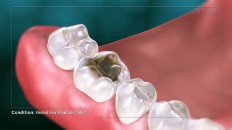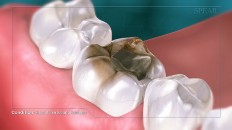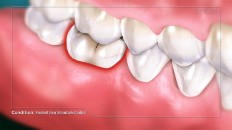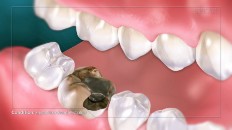 Even after a tooth has been restored, sometimes decay can reappear and compromise the structure of the tooth all over again.
Even after a tooth has been restored, sometimes decay can reappear and compromise the structure of the tooth all over again.
 Over time, bacteria works its way into the areas of the tooth surrounding and supporting the filling, and the tooth begins to deteriorate as a result.
Over time, bacteria works its way into the areas of the tooth surrounding and supporting the filling, and the tooth begins to deteriorate as a result.
 As the decay worsens, the tooth continues to weaken, which can result in cracking, pain and potentially tooth breakage or loss.
As the decay worsens, the tooth continues to weaken, which can result in cracking, pain and potentially tooth breakage or loss.
 If caught early enough, the decay can typically be removed and the tooth re-filled or crowned. However, if left untreated, more serious procedures might be needed such as a root canal, bridge or dental implant.
If caught early enough, the decay can typically be removed and the tooth re-filled or crowned. However, if left untreated, more serious procedures might be needed such as a root canal, bridge or dental implant.
Copyright © 2016 Spear Education. All rights reserved.